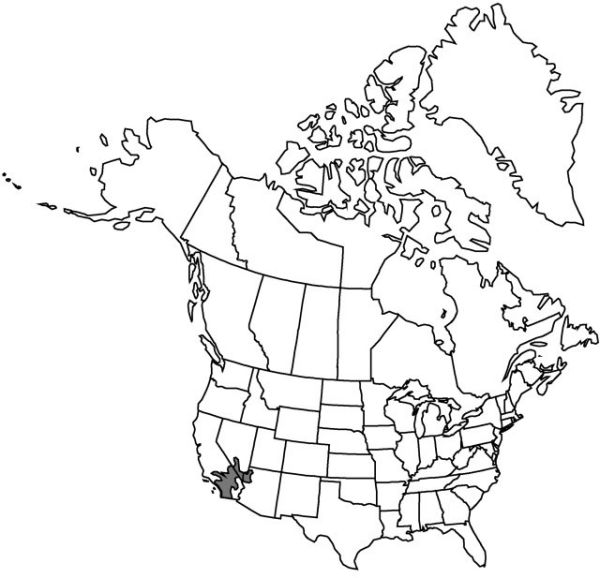Yucca schidigera
Gartenflora 20: 110. 1871.
Plants forming colonies of rosettes, shrubby, caulescent, to 5 m. Stems 1–8, simple or sparingly branched. Leaf blade erect, yelloish green, sword-shaped, broadest at middle, markedly concave, thick, 33–130 × 3–5 cm, rigid, glabrous, margins entire, filiferous with coarse fibers. Inflorescences erect, paniculate, dense, arising entirely within or scarcely beyond rosettes, obovoid or ellipsoid and flat distally, 3–6 dm; peduncle scapelike, to 4 dm. Flowers pendent; perianth globose; tepals spreading, distinct, white or cream, lanceolate or broadly lanceolate, 3–5(–7.5) × 1–1.8 cm; filaments 2–2.5 cm, papillose at base; anthers 3.2 mm; pistil 1.8 × 2.5 cm; ovary 1.7–2.7 × 0.7–1.2 cm, apex abruptly tapered; style 1–2 mm; stigmas distinct. Fruits pendent, baccate, indehiscent, elongate, cylindrical, 5–11.5 × 3–4 cm, fleshy, succulent. Seeds gray, 8–11 mm diam., 6–9 mm thick, rugose.
Phenology: Flowering late winter–early spring.
Habitat: Deserts and chaparral, rocky or gravelly mountain slopes
Elevation: 300–1200 m
Distribution

Ariz., Calif., Nev., Mexico (Baja California).
Discussion
Yucca schidigera is usually used for landscaping in the southwest and by Native Americans for food and fiber. Capsules made from inflorescence stalks are sold as natural health products.
Selected References
None.